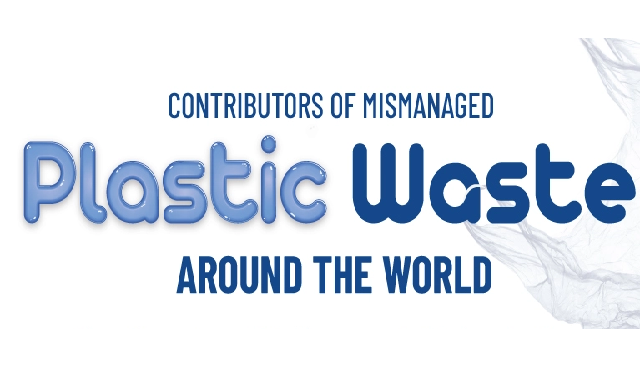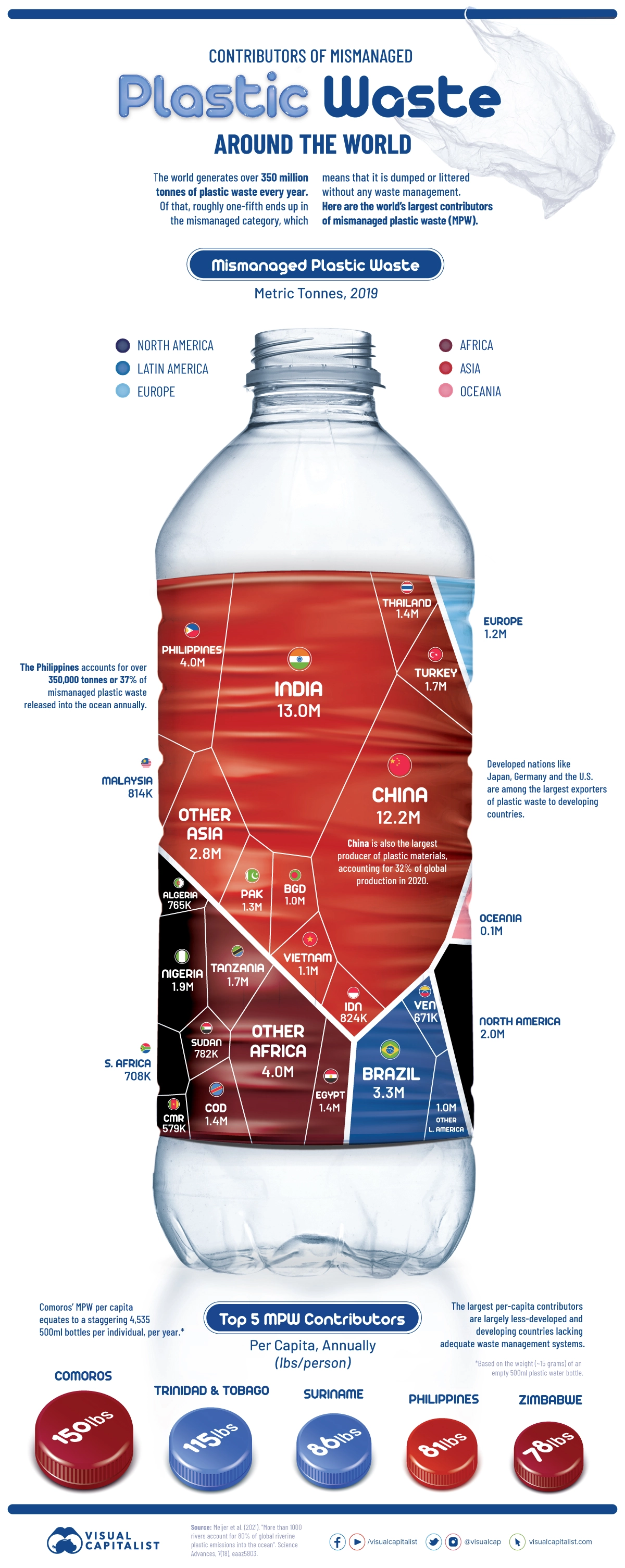Although plastic is one of the most useful materials in today’s
date, but its increasing has created an expanding layer of plastic waste. An approximate
of more than 350 million tons of plastic waste is generated each year.
About one-fifth of plastic is mishandled which means it is
disposed of without proper waste management practices, and only a portion of
plastic waste goes for recycling. The mishandled plastic waste is dangerous to
the land and marine life. The biggest threat is that the most of it does not
decompose thus, polluting the environment for hundreds of years.
This infographic illustrates the biggest contributors of mismanaged
plastic waste in 2019, based on data from a study by Meijer et al. published in
the Science Advances journal.
The Biggest Contributors of Mismanaged Plastic Waste:
Asian countries are responsible for the majority of global
mismanaged plastic waste (MPW), and many of the top plastic-emitting rivers are
concentrated in the region.
India and China are the countries responsible for over 10
million tons of MPW alone, although that could partly be driven by their sheer
population numbers.
Mainly, the top countries that create MPW are developing
regions that tend to have inadequate waste management infrastructure.
The Philippines is the third-largest contributor and is
responsible for 37% of all MPW released into the ocean at over 350,000 tons per
year. Solid waste management remains a major environmental issue in the
Philippines. The country recently closed down 335 illegal dumpsites, in order to
encourage the use of sanitary landfills and proper waste segregation.
Other countries that come on the top of this list are
Brazil, Nigeria, North America, Tanzania, and Turkey.
The three continents of Europe, North America, and Oceania
together account for only 5% of global mismanaged plastic waste. Nevertheless,
it is important to note that these numbers do not reveal the amount of waste
that is exported overseas, and many developed nations are known to export some
portions of their waste to poorer nations.
Mismanaged Plastic Waste Per Capita:
On a per capita basis, the archipelago of Comoros in East
Africa tops the list. Its per capita MPW is equivalent to over 4,500 empty
500ml plastic bottles per person, per year.
Although there is not much information available on waste
management in Comoros, it is one of the least-developed nations. In fact,
household consumption accounts for almost 100% of its annual gross domestic
product.
Trinidad and Tobago is a different case because of its
high-income status. The lack of waste segregation among households along with inefficient
waste management systems contribute to its high per capita figure of MPW.
The Impact of Plastic Waste on the environment:
Plastic waste has various negative effects on the
environment, especially as it can take hundreds of years to decompose.
Every year, there is millions of tons of plastic waste that
flows into the oceans, and this accounts for at least 85% of all marine
garbage. This is a great threat to marine life because fish and other aquatic
organisms can get trapped in plastic waste and can also swallow it.
Talking of threat to land, plastic waste compromises the
quality of soil and the nearby ecosystem. Moreover, burning plastic waste
releases toxic particles that have a harmful impact on air quality.
If the situation remains the same and current trends
continue to grow, it is expected that the landfills will end up in over 12
billion tons of plastic waste by the year 2050. Although recycling rates are
expected to improve, increasing the availability of adequate waste management
systems will be important in preventing plastic waste from entering the
environment.


